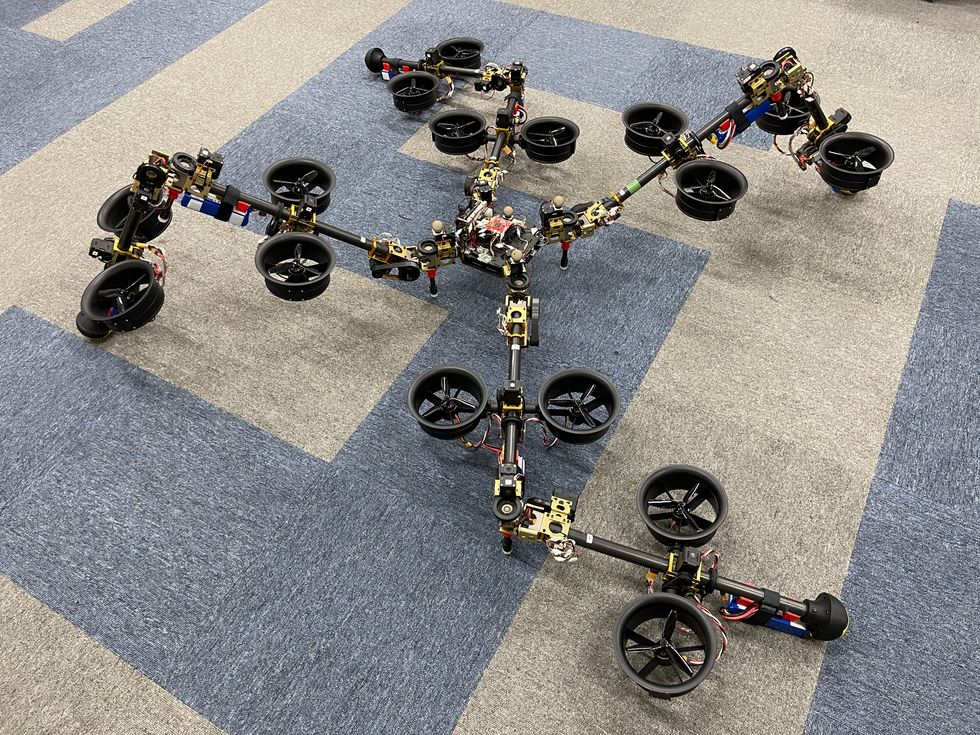Oh, Good: A Flying Robotic SPIDAR

Robots with multimodal locomotion capability are almost always a compromise, because usually they're a hodgepodge of mobility systems that don't really work together. It'd be possible to make a legged robot fly by stapling a bunch of propellers to it, but at any given time, either the legs or the propellers are going to be mostly just awkward extra mass. Some robots make this compromise more elegantly than others, but it's still a compromise.
A new quadrupedal robot under development at the University of Tokyo called SPIDAR aims to minimize this compromise by combining legs and propellers and relying on that combination for both walking and flying locomotion: Instead of leg actuators, it's got vectorable leg thrusters that can both move leg joints individually and get the entire robot completely airborne.
SPIDAR, in what is perhaps one of the worst backronyms of all time, stands for SPherIcally vectorable and Distributed rotors assisted Air-ground amphibious quadruped Robot." It is absolutely not a spider, since it has four legs rather than eight, but it does look sufficiently leggy to set off a similar squick response.
It's generally true that if there are enough thrusters on a thing, that thing can become airborne. What's really difficult is controlling it, and then doing something useful. And it gets even more difficult when you've got all kinds of wibbly-wobbly interconnected degrees of freedom that require constant management, as is the case with SPIDAR. And it's pretty easy to tell that this is really just a functional prototype at the moment since it seems to be perpetually on the verge of tearing itself apart. Science!
Each of SPIDAR's limb sections has a spherically vectorable dual thruster attached. These thrusters can roll" around the limb as well as rotating orthogonally to it, providing thrust in any direction. The joints do currently have small servos to actuate them a little bit, but this is mainly to simplify the dynamics of the system in order to run everything on board. The servos aren't strong enough to support the weight of the robot, and its mobility does depend primarily on the thruster system. In total, SPIDAR has eight links with 16 joints, and weighs in at a hefty 15 kilograms, which includes eight batteries distributed along the links. Total flight time is 9 minutes, and the robot can walk for more than double that.
 Moju Zhao
Moju Zhao